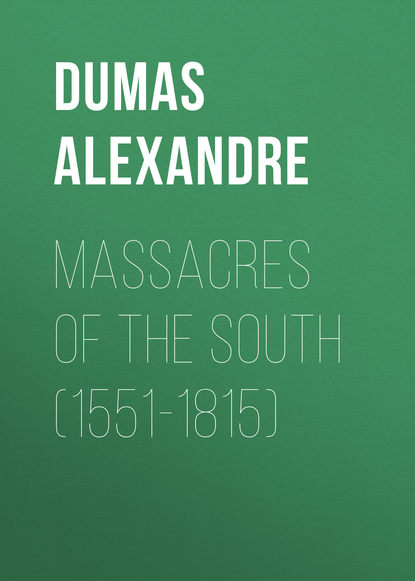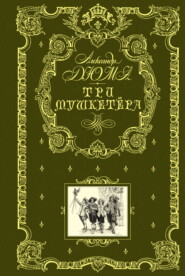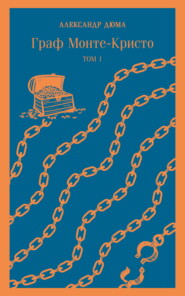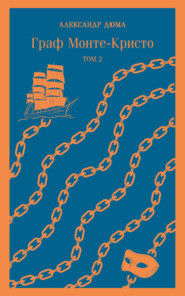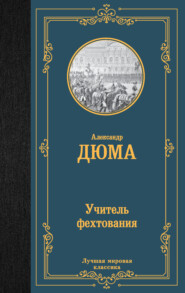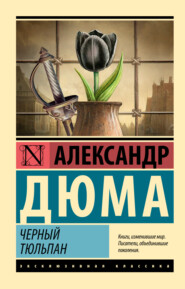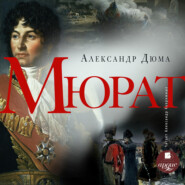По всем вопросам обращайтесь на: info@litportal.ru
(©) 2003-2024.
✖
Massacres of the South (1551-1815)
Настройки чтения
Размер шрифта
Высота строк
Поля
“II. The attention of the officers is called to the following: – When two or more villages or hamlets are so near together that they may be protected at the same time by the same troops, then in order to save time the work is to be carried on simultaneously in such villages or hamlets.
“III. When inhabitants are found still remaining in any of the proscribed places, they are to be brought together, and a list made of them, as well as an inventory taken of their stock and corn.
“IV. Those inhabitants who are of the most consequence among them shall be selected to guide the others to the places assigned.
“V. With regard to the live stock, the persons who may be found in charge of it shall drive it to the appointed place, save and except mules and asses, which shall be employed in the transport of corn to whatever places it may be needed in. Nevertheless, asses may be given to the very old, and to women with child who may be unable to walk.
“VI. A regular distribution of the militia is to be made, so that each house to be destroyed may have a sufficient number, for the task; the foundations of such houses may be undermined or any other method employed which may be most convenient; and if the house can be destroyed by no other means, it is to be set on fire.
“VII. No damage is to be done to the houses of former Catholics until further notice, and to ensure the carrying out of this order a guard is to be placed in them, and an inventory of their contents taken and sent to Marechal de Montrevel.
“VIII. The order forbidding the inhabitants to return to their houses is to be read to the inhabitants of each village; but if any do return they shall not be harmed, but simply driven away with threats; for the king does not desire that blood be shed; and the said order shall be affixed to a wall or tree in each village.
“IX. Where no inhabitants are found, the said order shall simply be affixed as above-mentioned in each place.
“(Signed) “MARECHAL DE MONTREVEL”
Under these instructions the list of the villages to be destroyed was given. It was as follows:
18 in the parish of Frugeres,
5 “ “ Fressinet-de-Lozere,
4 “ “ Grizac,
15 “ “ Castagnols,
11 “ “ Vialas,
6 “ “ Saint-Julien,
8 “ “ Saint-Maurice de Vantalon
14 “ “ Frezal de Vantalon,
7 “ “ Saint-Hilaire de Laret,
6 “ “ Saint-Andeol de Clergues,
28 “ “ Saint-Privat de Vallongues,
10 “ “ Saint-Andre de Lancise,
19 “ “ Saint-Germain de Calberte,
26 “ “ Saint-Etienne de Valfrancesque,
9 “ “ parishes of Prunet and Montvaillant,
16 “ “ parish of Florac.
–
202
A second list was promised, and was shortly afterwards published: it included the parishes of Frugeres, Pompidon, Saint-Martin, Lansuscle, Saint-Laurent, Treves, Vebron, Ronnes, Barre, Montluzon, Bousquet, La Barthes, Balme, Saint-Julien d’Aspaon Cassagnas, Sainte-Croix de Valfrancesque, Cabriac, Moissac, Saint-Roman, Saint Martin de Robaux, La Melouse, le Collet de Deze, Saint-Michel de Deze, and the villages of Salieges, Rampon, Ruas, Chavrieres, Tourgueselle, Ginestous, Fressinet, Fourques, Malbos, Jousanel, Campis, Campredon, Lous-Aubrez, La Croix de Fer, Le Cap de Coste, Marquayres, Le Cazairal, and Le Poujal.
In all, 466 market towns, hamlets, and villages, with 19,500 inhabitants, were included.
All these preparations made Marechal de Montrevel set out for Aix, September 26th, 1703, in order that the work might be carried out under his personal supervision. He was accompanied by MM. de Vergetot and de Marsilly, colonels of infantry, two battalions of the Royal-Comtois, two of the Soissonnais infantry, the Languedoc regiment of dragoons, and two hundred dragoons from the Fimarcon regiment. M. de Julien, on his side, set out for the Pont-de-Montvert at the same time with two battalions from Hainault, accompanied by the Marquis of Canillac, colonel of infantry, who brought two battalions of his own regiment, which was stationed in Rouergue, with him, and Comte de Payre, who brought fifty-five companies of militia from Gevaudan, and followed by a number of mules loaded with crowbars, axes, and other iron instruments necessary for pulling down houses.
The approach of all these troops following close on the terrible proclamations we have given above, produced exactly the contrary effect to that intended. The inhabitants of the proscribed districts were convinced that the order to gather together in certain places was given that they might be conveniently massacred together, so that all those capable of bearing arms went deeper into the mountains, and joined the forces of Cavalier and Roland, thus reinforcing them to the number of fifteen hundred men. Also hardly had M. de Julien set his hand to the work than he received information from M. de Montrevel, who had heard the news through a letter from Flechier, that while the royal troops were busy in the mountains the Camisards had come down into the plain, swarmed over La Camargue, and had been seen in the neighbourhood of Saint-Gilles. At the same time word was sent him that two ships had been seen in the offing, from Cette, and that it was more than probable that they contained troops, that England and Holland were sending to help the Camisards.
M de Montrevel; leaving the further conduct of the expedition to MM. de Julien and de Canillac, hastened to Cette with eight hundred men and ten guns. The ships were still in sight, and were really, as had been surmised, two vessels which had been detached from the combined fleets of England and Holland by Admiral Schowel, and were the bearers of money, arms, and ammunition to the Huguenots. They continued to cruise about and signal, but as the rebels were forced by the presence of M. de Montrevel to keep away from the coast, and could therefore make no answer, they put off at length into the open, and rejoined the fleet. As M. de Montrevel feared that their retreat might be a feint, he ordered all the fishermen’s huts from Aigues-Morte to Saint-Gilles to be destroyed, lest they should afford shelter to the Camisards. At the same time he carried off the inhabitants of the district of Guillan and shut them up in the chateau of Sommerez, after having demolished their villages. Lastly, he ordered all those who lived in homesteads, farms, or hamlets, to quit them and go to some large town, taking with them all the provisions they were possessed of; and he forbade any workman who went outside the town to work to take more than one day’s provisions with him.
These measures had the desired effect, but they were terrible in their results; they deprived the Camisards of shelter indeed, but they ruined the province. M. de Baville, despite his well-known severity tried remonstrances, but they were taken in bad part by M. de Montrevel, who told the intendant to mind his own business, which was confined to civil matters, and to leave military matters in his, M. de Montrevel’s, hands; whereupon the commandant joined M. de Julien, who was carrying on the work of destruction with indefatigable vigour.
In spite of all the enthusiasm with which M. de Julien went to work to accomplish his mission, and being a new convert, it was, of course, very great. Material hindrances hampered him at every step. Almost all the doomed houses were built on vaulted foundations, and were therefore difficult to lay low; the distance of one house from another, too, their almost inaccessible position, either on the peak of a high mountain or in the bottom of a rocky valley, or buried in the depths of the forest which hid then like a veil, made the difficulty still greater; whole days were often lost by the workmen and militia in searching for the dwellings they came to destroy.
The immense size of the parishes also caused delay: that of Saint-Germain de Calberte, for instance, was nine leagues in circumference, and contained a hundred and eleven hamlets, inhabited by two hundred and seventy-five families, of which only nine were Catholic; that of Saint-Etienne de Valfrancesque was of still greater extent, and its population was a third larger, so that obstacles to the work multiplied in a remarkable manner. For the first few days the soldiers and workmen found food in and around the villages, but this was soon at an end, and as they could hardly expect the peasants to keep up the supply, and the provisions they had brought with them being also exhausted, they were soon reduced to biscuit and water; and they were not even able to make it into a warm mess by heating the water, as they had no vessels; moreover, when their hard day’s work was at an end, they had but a handful of straw on which to lie. These privations, added to their hard and laborious life, brought on an endemic fever, which incapacitated for work many soldiers and labourers, numbers of whom had to be dismissed. Very soon the unfortunate men, who were almost as much to be pitied as those whom they were persecuting, waited no longer to be sent away, but deserted in numbers.
M de Julien soon saw that all his efforts would end in failure if he could not gain the king’s consent to a slight change in the original plan. He therefore wrote to Versailles, and represented to the king how long the work would take if the means employed were only iron tools and the human hand, instead of fire, the only true instrument employed by Heaven in its vengeance. He quoted in support of his petition the case of Sodom and Gomorrah – those cities accursed of the Lord. Louis XIV, impressed by the truth of this comparison, sent him back a messenger post-haste authorising him to employ the suggested means.
“At once,” says Pere Louvreloeil, “the storm burst, and soon of all the happy homesteads nothing was left: the hamlets, with their barns and outhouses, the isolated farmhouses, the single huts and cottages, every species of building in short, disappeared before the swift advancing flames as wild flowers, weeds, and roots fall before the ploughshare.”
This destruction was accompanied by horrible cruelty. For instance, twenty-five inhabitants of a certain village took refuge in a chateau; the number consisted of children and very old people, and they were all that was left of the entire population. Palmerolle, in command of the miquelets, hearing of this, hastened thither, seized the first eight he could lay hold of, and shot them on the spot, “to teach them,” as he says in his report, “not to choose a shelter which was not on the list of those permitted to them.”
The Catholics also of St. Florent, Senechas, Rousson, and other parishes, becoming excited at seeing the flames which enveloped the houses of their old enemies, joined together, and arming themselves with everything that could be made to serve as an instrument of death, set out to hunt the conscripts down; they carried off the flocks of Perolat, Fontareche, and Pajolas, burned down a dozen houses at the Collet-de-Deze, and from there went to the village of Brenoux, drunk with the lust of destruction. There they massacred fifty-two persons, among them mothers with unborn children; and with these babes, which they tore from them, impaled on their pikes and halberts, they continued their march towards the villages of St. Denis and Castagnols.
Very soon these volunteers organised themselves into companies, and became known under the name of Cadets de la Croix, from a small white cross which they wore on their coats; so the poor Huguenots had a new species of enemy to contend with, much more bloodthirsty than the dragoons and the miquelets; for while these latter simply obeyed orders from Versailles, Nimes, or Montpellier, the former gratified a personal hate – a hate which had come down to them from their fathers, and which they would pass on to their children.
On the other hand, the young Huguenot leader, who every day gained more influence over his soldiers, tried to make the dragoons and Cadets de la Croix suffer in return everything they inflicted on the Huguenots, except the murders. In the night from the 2nd to the 3rd October, about ten o’clock, he came down into the plain and attacked Sommieres from two different points, setting fire to the houses. The inhabitants seizing their arms, made a sortie, but Cavalier charged them at the head of the Cavalry and forced them to retreat. Thereupon the governor, whose garrison was too small to leave the shelter of the walls, turned his guns on them and fired, less in the hope of inflicting injury on them than in that of being heard by the neighbouring garrisons.
The Camisards recognising this danger, retired, but not before they had burnt down the hotels of the Cheval-Blanc, the Croix-d’Or, the Grand-Louis, and the Luxembourg, as well as a great number of other houses, and the church and the presbytery of Saint-Amand.
Thence the Camisards proceeded to Cayla and Vauvert, into which they entered, destroying the fortifications. There they provided themselves abundantly with provisions for man and beast. In Vauvert, which was almost entirely inhabited by his co-religionists, Cavalier assembled the inhabitants in the market-place, and made them join with him in prayer to God, that He would prevent the king from following evil counsel; he also exhorted his brethren to be ready to sacrifice their goods and their lives for the re-establishment of their religion, affirming that the Holy Spirit had revealed to him that the arm of the Lord, which had always come to their aid, was still stretched out over them.
Cavalier undertook these movements in the hope of interrupting the work of destruction going on in Upper Cevennes; and partly obtained the desired result; for M. de Julien received orders to come down into the open country and disperse the Camisards.
The troops tried to fulfil this task, but, thanks to the knowledge that the rebels had of the country, it was impossible to come up with them, so that Fleshier, who was in the thick of the executions, conflagrations, and massacres, but who still found time to write Latin verse and gallant letters, said, in speaking of them, “They were never caught, and did all the damage they wished to do without let or hindrance. We laid their mountains waste, and they laid waste our plain. There are no more churches left in our dioceses, and not being able either to plough or sow our lands, we have no revenues. We dread serious revolt, and desire to avoid a religious civil war; so all our efforts are relaxing, we let our arms fall without knowing why, and we are told, ‘You must have patience; it is not possible to fight against phantoms.’” Nevertheless, from time to time, these phantoms became visible. Towards the end of October, Cavalier came down to Uzes, carried off two sentinels who were guarding the gates, and hearing the call to arms within, shouted that he would await the governor of the city, M. de Vergetot, near Lussan.
And indeed Cavalier, accompanied by his two lieutenants, Ravanel and Catinat, took his way towards this little town, between Uzes and Bargeac, which stands upon an eminence surrounded upon all sides by cliffs, which serve it as ramparts and render it very difficult of access. Having arrived within three gun-shots of Lussan, Cavalier sent Ravanel to demand provisions from the inhabitants; but they, proud of their natural ramparts, and believing their town impregnable, not only refused to comply with the requisition, but fired several shots on the envoy, one of which wounded in the arm a Camisard of the name of La Grandeur, who had accompanied Ravanel. Ravanel withdrew, supporting his wounded comrade, followed by shots and the hootings of the inhabitants. When they rejoined Cavalier and made their report, the young commander issued orders to his soldiers to make ready to take the town the next morning; for, as night was already falling, he did not venture to start in the dark. In the meantime the besieged sent post-haste to M. de Vergetot to warn him of their situation; and resolving to defend themselves as long as they could, while waiting for a response to their message they set about barricading their gates, turned their scythes into weapons, fastened large hooks on long poles, and collected all the instruments they could find that could be used in attack or defence. As to the Camisards, they encamped for the night near an old chateau called Fan, about a gun-shot from Lussan.
At break of day loud shouts from the town told the Camisards that the expected relief was in sight, and looking out they saw in the distance a troop of soldiers advancing towards them; it was M. de Vergetat at the head of his regiment, accompanied by forty Irish officers.
The Protestants prepared themselves, as usual, by reciting psalms and prayers, notice without taking of the shouts and threats of any of the townspeople, and having finished their invocations, they marched out to meet the approaching column. The cavalry, commanded by Catinat, made a detour, taking a sheltered way to an unguarded bridge over a small river not far off, so as to outflank the royal forces, which they were to attack in the rear as soon as Cavalier and Ravanel should have engaged them in front.
M de Vergetot, on his side, continued to advance, so that the Calvinists and the Catholics were soon face to face. The battle began on both sides by a volley; but Cavalier having seen his cavalry emerging from a neighbouring wood, and counting upon their assistance, charged the enemy at the double quick. Catinat judging by the noise of the firing that his presence was necessary, charged also at a gallop, falling on the flank of the Catholics.





